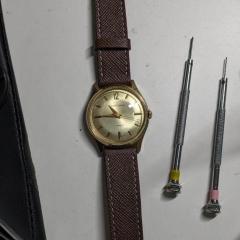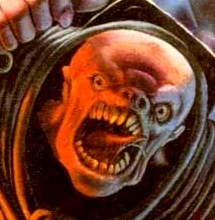-
Similar Content
-
Recently Browsing
- No registered users viewing this page.
-
Topics
-
Posts
-
Another option is to an old piece of clock mainspring, if you have some thick enough.
-
Thanks guys. The replacement balance was way too big to fit the watch movement, my point being that it’s definitely not the correct part for this movement. The spring was similar dimensions, but clearly not close enough to avoid other adjustements. Yes, I’m aware that springs are usually sold with the balance wheel complete, but its very often possible in my experience to be able to swap out a spring from one balance wheel to another of the same type. I tried it anyway as it was there in front of me and easy to do. No harm in trying. In the end I’ve repaired the cracked collet and refitted the original balance complete, it’s back in business. Just a shame I couldn’t identify and buy the correct new part, but this model seems to be fairly lacking in parts data.
-
Good job. 👍 To my eyes, the centre of the coil is about where the red dot is. So a tweak at either of the arrows (as per the Chicago School) should centre it. It's not far off, and if you already have it installed , I'd run it and see how it performs.
-
By darkhelmetlive · Posted
I was curious about that, and last time I changed the battery I checked and both insulators are definitely there. The little arm that extends up away from the movement to touch the speaker seemed maybe slightly misaligned. I wondered if it was touching something it shouldn’t be, hence my parchment paper experiment. I also considered maybe just removing it as I believe it’s a single screw. Another thought is I have a service manual PDF for it and it has some testing instructions with voltage and other numbers, I might try some of those to see if something is obviously wrong. I see weasol probably posted the same PDF. All that being said, it might just need a service, as several of you have said, which I’d probably try to find a professional for. I’m don’t know that I feel like taking this thing apart too much. -
By EtherJunky · Posted
So I've been lurking on the internet again and found a rabbit hole to explore. I was able to download 5 pdf's about Soviet watch repair. They're all in Russian and are scanned images, so unlikely to be useful to anyone that doesn't speak the language or is able to use some form of artificial intelligence to translate it. I just thought it might be of interest to some of you. А.П.Харитончук Устройство и ремонт часов.pdf Д.Д.Карл - Сложные часы и их ремонт.pdf Дональд Де Карль - Руководство ро ремонту часов.pdf Ремонт часов, 1968 - Пинсон.pdf Харинтончук А.П. Устройство и ремонт часов.pdf 6 pdf's* [A._P._Haritonchuk]_Spravochnaya_kniga_po_remontu_(libcats.org).pdf
-






Recommended Posts